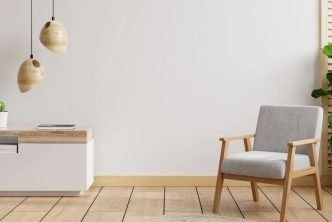In the world of interior design, creating attractive spaces in your home is more than just a visual exercise. It’s a journey that can significantly impact your daily life, shaping your mood, well-being, and overall quality of life. A well-designed home environment has the power to nurture your soul, offer a sanctuary from the outside world, and provide a canvas for your personal style to shine. This extensive guide will walk you through the process of crafting attractive spaces within your home, exploring everything from understanding the impact of your home environment to practical tips for maintenance.
Table of Contents
Understanding the Impact of Home Environment
Your home is more than just bricks and mortar; it’s a reflection of your personality, a shelter that should nurture your soul, and a backdrop for the story of your life. The environment you create within its walls has a profound impact on your well-being. When thoughtfully designed, your home can be a place of comfort and rejuvenation, positively influencing your mood, productivity, and overall quality of life. A well-designed home environment can uplift your spirits and provide a haven from the stressors of the outside world.
The concept of biophilia, which suggests that humans have an innate connection to nature, underscores the importance of bringing natural elements into your home. Consider integrating natural materials, such as wood and stone, and adding indoor plants to create a calming and inviting atmosphere. These elements can improve air quality, reduce stress, and increase your overall well-being.
Defining Your Design Goals
The first step in creating attractive spaces in your home is to define your design goals. What are your expectations and aspirations for your living spaces? Do you want to create a cozy and inviting atmosphere for your family, a stylish and elegant setting for entertaining, or a tranquil retreat for relaxation? Clearly defining your design goals will guide all your subsequent decisions.
Start by making a list of your priorities, such as functionality, aesthetics, and the ambiance you wish to achieve. Do you have specific needs, like a dedicated workspace or a play area for children? Assessing your requirements is crucial in tailoring the design to your lifestyle.
Choosing a Design Style
Selecting a design style that resonates with you is pivotal in creating an attractive home environment. Interior design styles encompass a wide range, from the timeless elegance of traditional design to the sleek lines of contemporary and the cozy charm of farmhouse style. Take time to explore different design styles and identify the one that aligns with your personal taste and the architectural features of your home.
Considerations when choosing a design style include the color palette, materials, and furnishings. For example, a coastal style might incorporate shades of blue and white, natural fibers, and nautical-inspired decor, while an industrial style may feature raw materials like exposed brick and metal accents. Your chosen style should reflect your personality and create a cohesive and harmonious atmosphere throughout your home.
Color Psychology and Selection
Color is a potent tool in interior design, as it can profoundly influence our emotions and perceptions. Understanding color psychology is essential when selecting the right color palette for your space. For instance, cool colors like blues and greens tend to create a calming effect, making them ideal for bedrooms and bathrooms, while warm colors like reds and yellows can evoke energy and vibrancy, suitable for social areas.
When choosing a color palette, take into account the natural light in each room and the mood you want to create. Consider using neutral tones as a base, adding splashes of color through decor and accessories. Test paint samples on your walls to observe how they appear in different lighting conditions, as colors can change significantly under varying light sources.
Furniture and Layout Considerations
The choice of furniture and the arrangement of your space are fundamental in creating attractive and functional interiors. The size and style of your furniture should complement the overall design of your home and meet your lifestyle needs. When selecting furniture, aim for a balance between comfort and aesthetics, ensuring that it serves its intended purpose.
Consider the flow and layout of your rooms. Open floor plans can create a sense of space and connectivity, while strategically placed furniture can define zones within an open area. Pay attention to traffic flow and make sure your furniture arrangement allows for easy movement. In smaller spaces, multi-functional furniture can maximize your living area, offering storage solutions and versatility.
Lighting and Ambiance
Lighting is a critical element in creating ambiance within your home. It can transform a room’s mood, making it inviting, cozy, or vibrant, depending on the type of lighting you choose. Natural light is a valuable asset, enhancing well-being and reducing energy consumption. Ensure your windows are unobstructed and consider using light and sheer window treatments to maximize daylight.
Incorporate a variety of lighting sources in your home. Ambient lighting provides overall illumination, while task lighting is essential for specific activities such as reading or cooking. Accent lighting, like wall sconces and picture lights, can highlight architectural features and artwork. Dimmer switches and smart lighting systems allow you to adjust the lighting to suit various occasions and moods, from bright and energizing to soft and relaxing.
Incorporating Art and Decor
Personalizing your home with art and decor is where your personality truly shines through. Artwork, decorative objects, and personal touches add character to your spaces, making them uniquely yours. When selecting art and decor, consider pieces that resonate with you and evoke positive emotions.
Gallery walls can showcase your favorite artwork and photographs, creating a visual focal point in a room. Decorative accessories like throw pillows, rugs, and curtains can introduce color, texture, and patterns. Don’t be afraid to mix and match styles and materials to create a layered and curated look that tells your story.
Practical Tips for Maintenance
Creating attractive spaces in your home is an ongoing process that requires maintenance and organization. To keep your spaces looking great over time, follow these practical tips:
- Declutter Regularly: Clutter can detract from the beauty of your home. Regularly assess your belongings and declutter items you no longer need.
- Organize with Purpose: Invest in storage solutions that fit your lifestyle and keep your spaces organized. This includes shelving, cabinets, and closet systems.
- Routine Cleaning: Establish a cleaning routine to maintain the cleanliness of your home. Regular dusting, vacuuming, and surface cleaning can go a long way in preserving your attractive spaces.
- Protect Your Investments: Use furniture protectors, rugs, and coasters to prevent damage to your furnishings. Proper care can extend the life of your belongings.
- Rotate Decor: Seasonal changes in decor can keep your home feeling fresh. Swap out accessories and textiles to match the season or your evolving style.
Kitchen and Bathroom Remodeling Ideas
Kitchens and bathrooms are two of the most essential spaces in a home, and their design and functionality are paramount to the overall appeal of your living environment. Here are some innovative ideas for remodeling these crucial areas:
Kitchen Remodeling Ideas
This are the best kitchen remodeling ideas in the market:
Open Shelving: Consider open shelving in your kitchen to display your favorite dishes, cookware, and decorative items. This adds a touch of personality and creates an open, airy feel.
Smart Appliances: Invest in smart appliances that not only streamline your kitchen tasks but also look sleek and modern. These appliances can make your kitchen a hub of convenience.
Island Oasis: Kitchen islands have become the heart of the modern kitchen. Add seating, storage, and workspace to your island, making it a multifunctional centerpiece.
Statement Backsplash: A striking backsplash can be the focal point of your kitchen. Consider using colorful or textured tiles to add drama and personality to the space.
Under-Cabinet Lighting: Install under-cabinet lighting to provide task lighting for food prep and a warm ambiance for evening gatherings. LED strips are energy-efficient and versatile.
Bathroom Remodeling Ideas:
Luxurious Shower: Upgrade your shower to a spa-like experience with multiple showerheads, body jets, and a built-in bench. Consider frameless glass enclosures for a modern touch.
Floating Vanities: Floating vanities create a sense of space and modernity in the bathroom. Pair them with stylish vessel sinks for added visual appeal.
Natural Materials: Incorporate natural materials like stone and wood for a soothing and earthy atmosphere. These materials add warmth and texture to your bathroom design.
Statement Mirrors: Choose statement mirrors with unique shapes and frames to enhance the aesthetics of your bathroom. Mirrors can also make the space feel larger and brighter.
Heated Floors: Heated bathroom floors provide comfort and luxury, especially in colder climates. Radiant floor heating can transform your morning routine.
Conclusion
Creating attractive spaces and kitchen layouts in your home is an art and a science that combines design principles with your personal style and needs. Your home environment plays a significant role in shaping your mood, well-being, and overall quality of life. By understanding the impact of your surroundings, defining your design goals, and making informed choices in design style, color, furniture, lighting, and decor, you can craft spaces that are not only visually appealing but also enhance your daily life.
Additionally, practical maintenance tips ensure that your attractive spaces remain beautiful and functional over time. When it comes to kitchen and bathroom remodeling, innovative ideas can transform these essential areas into luxurious and efficient spaces that cater to your lifestyle. Ultimately, your home should be a reflection of you, a place where you can find solace, inspiration, and happiness amidst the beautiful spaces you’ve created.





